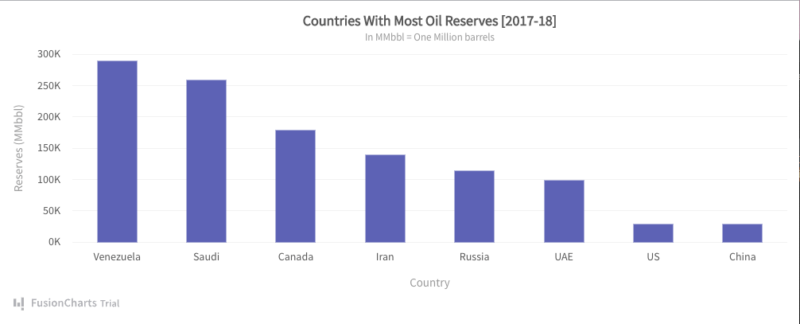Nuxt.jsでFusionChartsを入れたので、その覚書。
最初はVueフレームワークで導入を試みようとしたのですが、エラーが消えなかったので断念。VueとNuxtの超えられない壁を感じたのですが、githubにnuxtで動かしている人もいて、多分nuxtでも動かせるんだろうけど、私の知識不足により実現できていません。
先輩の偉大な助けにより、vue dependencyをプラグイン化することで解決しました。ありがたやありがたや。
ちなみに該当githubはこちら。プロジェクトをDLして動かしたら、選択できる地図が現れました。気になる方は動かしてみてください。
https://github.com/ICJIA/fusioncharts-test
Plain JavaScriptで動かす
というわけで、シンプルにPlain JavaScriptで動かすことにしました。
公式のGet Startedはこちらです。
https://www.fusioncharts.com/dev/getting-started/plain-javascript/your-first-chart-using-plain-javascript
前提条件
npmでfusionchartsをインストールする場合は、Node.jsのインストールが必要です。
インストール
CDN、ローカルファイル、npmのそれぞれでインストールする方法があります。
CDNの場合は、nuxt.config.jsのhead: { script: [ {src: ”,}, ],}部分にcdnソースを2つ、盛り込みましょう。
head: {
script: [
// Step 1 - Include the fusioncharts core library
{
src: 'https://cdn.fusioncharts.com/fusioncharts/latest/fusioncharts.js',
},
// Step 2 - Include the fusion theme
{
src: 'https://cdn.fusioncharts.com/fusioncharts/latest/themes/fusioncharts.theme.fusion.js',
},
],
はい。
私はnpmでインストールしました。
既存のnuxt.jsプロジェクトディレクトリで、npmを叩くだけ。先に最新のwebpackを入れておきます。
$ npm install webpack webpack-cli --save-dev
$ npm install fusionchartsテンプレートを用意
pages>fusioncharts>index.vueを作成し、templateを用意。必要なdependencyをimportします。
<template>
<div>
<div id="chart-container">FusionCharts XT will load here!</div>
</div>
</template>
<script>
// Include the core fusioncharts file from core
import FusionCharts from 'fusioncharts/core'
// Include the chart from viz folder
import Column2D from 'fusioncharts/viz/column2d'
// Include the fusion theme
import FusionTheme from 'fusioncharts/themes/es/fusioncharts.theme.fusion'
// Add the chart and theme as dependency
// E.g. FusionCharts.addDep(ChartType)
FusionCharts.addDep(Column2D)
FusionCharts.addDep(FusionTheme)
</script>これで準備完了です。
データを用意
チャートを作成するにはデータが必要ですね。例として、ここでは世界の石油保有国とその量を示した2D chart を表現することにしましょう(公式に沿ってるだけですよ)。
<script></script>内importの下に、chartDataを定義します。x軸となるデータラベルをlabel、y軸となるデータバリューをvalueとして、オブジェクトにします。この辺はconstants/define.jsとかに書いてindex.vueでimportした方がnuxtっぽいけど。
// Preparing the chart data
const chartData = [
{
label: "Venezuela",
value: "290"
},
{
label: "Saudi",
value: "260"
},
{
label: "Canada",
value: "180"
},
{
label: "Iran",
value: "140"
},
{
label: "Russia",
value: "115"
},
{
label: "UAE",
value: "100"
},
{
label: "US",
value: "30"
},
{
label: "China",
value: "30"
}
];チャート設定
データが用意できたので、いよいよ次はチャートの設定部分です。以下では公式の例をそのまま載せていますが、掲載されているオプションを元に色々カスタマイズができます。
// Create a JSON object to store the chart configurations
const chartConfig = {
// チャートのタイプ
type: "column2d",
// Set the container object
renderAt: "chart-container",
// Specify the width of the chart
width: "100%",
// Specify the height of the chart
height: "400",
// Set the type of data
dataFormat: "json",
dataSource: {
chart: {
// Set the chart caption
caption: "Countries With Most Oil Reserves [2017-18]",
// Set the chart subcaption
subCaption: "In MMbbl = One Million barrels",
// Set the x-axis name
xAxisName: "Country",
// Set the y-axis name
yAxisName: "Reserves (MMbbl)",
numberSuffix: "K",
// Set the theme for your chart
theme: "fusion"
},
// Chart Data from Step 2
data: chartData
}
};FusionChartsをmoutedで描画
最後に、FusionChartsをMountedします。
export default {
mounted() {
FusionCharts.ready(function () {
console.log('passed FunctionChart')
const fusioncharts = new FusionCharts(chartConfig)
fusioncharts.render()
})
console.log('mounted!')
},
}npx nuxtした際の見た目

